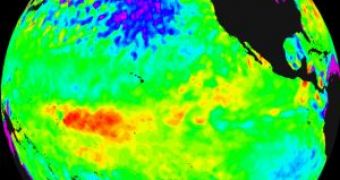The forecasts of the scientists have started to be felt: global warming is more and more present. UK's Met Office and Hadley Center have predicted that 2007 is going to be the warmest year in record. An extended warming period provoked by the El Nino event in the Pacific Ocean is likely to push up global temperatures to unseen limits.
There is a probability of 60% that the average surface temperature will overpass the current record established in 1998. In fact, for Britain, 2006 has had the highest average temperature since records began in 1914.
The estimation is of 0.54C (0.97F) above the long-term average of 14C (57C), over the 1998 value of 0.52C (0.94F). The other factor pushing up the temperatures is, of course, the emission of greenhouse effect gases.
"The first was greenhouse gas emissions from human activity," said Professor Chris Folland, head of the Hadley Center's climate variability research.
"This is a statistical method; it is a number that represents the heating of the atmosphere. Greenhouse gases cause heating, while aerosols cause cooling," Folland added.
El Nino is marked by the movements of unusually warm waters off the north-western coast of South America and West Pacific, and is regarded as having the biggest influence on the yearly variability of the Earth's climate. A moderate strength of El Nino usually foresees a warming.
"There is a big lag between the El Nino and the warming of global temperatures - it takes about four months or perhaps a bit longer," said Folland.
"We have two methods of forecasting the effect of the El Nino. One is a statistical method based on two patterns of sea surface temperatures in the El Nino region, and the other is a complex mathematical model."
Data recorded in the previous 50 years help forecasting El Nino.
"We have actually run this forecast three times, updating it every month... and it is completely stable."
The 60% probability that 2007 would set a new record meant that it "was more likely than not", he concluded.
The Hadley Center says the estimation has just a 0.06C margin of error.
In December, the World Meteorological Organization announced that in 2006, the temperature was 0.42C (0.75F) above the 1961-1990 average, which means the sixth warmest on record.
Photo credit: NASA.

 14 DAY TRIAL //
14 DAY TRIAL //